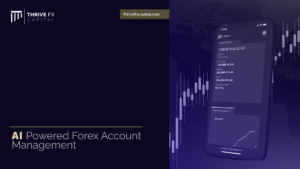

Wall Street’s most talked about recession indicator is sounding its loudest alarm in two decades, intensifying concerns among investors that the U.S. economy is heading toward a slowdown.
That indicator is called the yield curve, and it’s a way of showing how interest rates on various U.S. government bonds compare, notably three-month bills, and two-year and 10-year Treasury notes.
Usually, bond investors expect to be paid more for locking up their money for a long stretch, so interest rates on short-term bonds are lower than those on longer-term ones. Plotted out on a chart, the various yields for bonds create an upward sloping line — the curve.
But every once in a while, short-term rates rise above long-term ones. That negative relationship contorts the curve into what’s called an inversion, and signals that the normal situation in the world’s biggest government bond market has been upended.
An inversion has preceded every U.S. recession for the past half century, so it’s seen as a harbinger of economic doom. And it’s happening now.
The yield curve has predictive power that other markets don’t.
On Wednesday, the yield on two-year Treasury notes stood at 3.23 percent, above the 3.03 percent yield on 10-year notes. A year ago, by comparison, two-year yields were over one percentage point lower than the 10-year yields.
The Fed’s mantra on inflation back then was that inflation would be transitory, meaning that the central bank did not see a need to rapidly raise interest rates. As a result, shorter-dated Treasury yields remained low.
But over the past nine months, the Fed has become increasingly concerned that inflation isn’t going to fade on its own and it has begun to tackle rapidly rising prices by raising interest rates quickly. By next week, when the Fed is expected to raise rates again, its policy rate will have jumped by about 2.5 percentage points from near zero in March, and that has pushed up yields on short-term Treasuries like the two-year note.
Investors on the other hand, have become increasingly fearful that the central bank will go too far, slowing the economy to such an extent that it sets off a severe downturn. This worry is reflected in falling longer-dated Treasury yields like the 10-year, which tell us more about investors expectations for growth.
8 Signs That the Economy Is Losing Steam
Worrying outlook. Amid persistently high inflation, rising consumer prices and declining spending, the American economy is showing clear signs of slowing down, fueling concerns about a potential recession. Here are other eight measures signaling trouble ahead:
Such nervousness is also reflected in other markets: Stocks in the United States have fallen close to 17 percent so far this year, as investors reassess companies’ ability to withstand a slowdown in the economy; the price of copper, a global bellwether because of its use in an array consumer and industrial products, has fallen over 25 percent; and the U.S. dollar, a haven in periods of worry, is at its strongest in two decades.
What sets the yield curve apart is its predictive power, and the recession signal it is sending right now is stronger than it has been since late 2000, when the bubble in technology stocks had begun to burst and a recession was just a few months away.
That recession hit in March 2001 and lasted about eight months. By the time it started, the yield curve was already back to normal because policymakers had begun to lower interest rates to try to return the economy to health.
The yield curve also foretold the global financial crisis that began in December 2007, initially inverting in late 2005 and staying that way until mid-2007.
That track record is why investors across the financial markets have taken notice now that the yield curve has inverted again.
“The yield curve is not the gospel but I think to ignore it is at your own peril,” said Greg Peters, co-chief investment officer at asset manager PGIM Fixed Income.
But which part of the yield curve matters?
On Wall Street, the most commonly referenced part of the yield curve is the relationship between two-year and 10-year yields, but some economists prefer to focus on the relationship between the yield on three-month bills and 10-year notes instead.
That group includes one of the pioneers of research into the yield-curve’s predictive power.
Campbell Harvey, now an economics professor at Duke University, remembers being asked to develop a model that could forecast U.S. growth while he was a summer intern at the now-defunct Canadian mining company Falconbridge in 1982.
Mr. Harvey turned to the yield curve but the United States was already roughly a year into recession and he was soon laid off because of the economic climate.
It wasn’t until the mid 1980s, when he was a Ph.D. candidate at the University of Chicago, that he completed his research showing that an inversion of the three-month and 10-year yields preceded recessions that began in 1969, 1973, 1980 and 1981.
Mr. Harvey said he preferred to look at three-month yields because they are close to current conditions, while others have noted that they more directly capture investors’ expectations of immediate changes in Fed policy.
Understand Inflation and How It Impacts You
For most market watchers, the different ways to measure the yield curve all broadly point in the same direction, signaling slowing economic growth. They are “different flavors,” said Bill O’Donnell, an interest rate strategist at Citibank, “but they are all still ice cream.”
Three-month yields remain below 10-year yields. So by this measure, the yield curve hasn’t inverted, but the gap between them has been shrinking rapidly as concerns about a slowdown have escalated. By Wednesday, the difference between the two yields had fallen from over two percentage points in May to around 0.5 percentage points, the lowest it’s been since the pandemic-induced downturn in 2020.
The yield curve can’t tell us everything.
Some analysts and investors argue that the attention on the yield curve as a popular recession signal is overdone.
One common criticism is that the yield curve tells us little about when a recession will start, only that there probably will be one. The average time to a recession after two-year yields have risen above 10-year yields is 19 months, according to data from Deutsche Bank. But the range runs from six months to four years.
The economy and financial markets have also evolved since the 2008 financial crisis, when the model was last in vogue. The Fed’s balance sheet has ballooned as it has repeatedly bought Treasuries and mortgage bonds to help support financial markets, and some analysts argue that those purchases can distort the yield curve.
These are both points that Mr. Harvey accepts. The yield curve is a simple way to forecast the trajectory for U.S. growth and the potential for a recession. It has proved reliable but it is not perfect.
He suggests using it in conjunction with surveys of economic expectations among chief financial officers, who typically pull back on corporate spending as they become more worried about the economy.
He also pointed to corporate borrowing costs as an indicator of the risk that investors perceive in lending to private companies. Those costs tend to rise as the economy slows. Both of these measures tell the same story right now: Risk is rising, and expectations for a slowdown are mounting.
“If I was back in my summer internship, would I just look at the yield curve? No,” Mr. Harvey said.
But that also doesn’t mean that it has stopped being a helpful indicator.
“It’s more than helpful. It’s quite valuable,” Mr. Harvey said. “It is incumbent upon any company’s managers to take the yield curve as a negative signal and engage in risk management. And for people too. Now is not the time to max out your credit card on an expensive holiday.”



